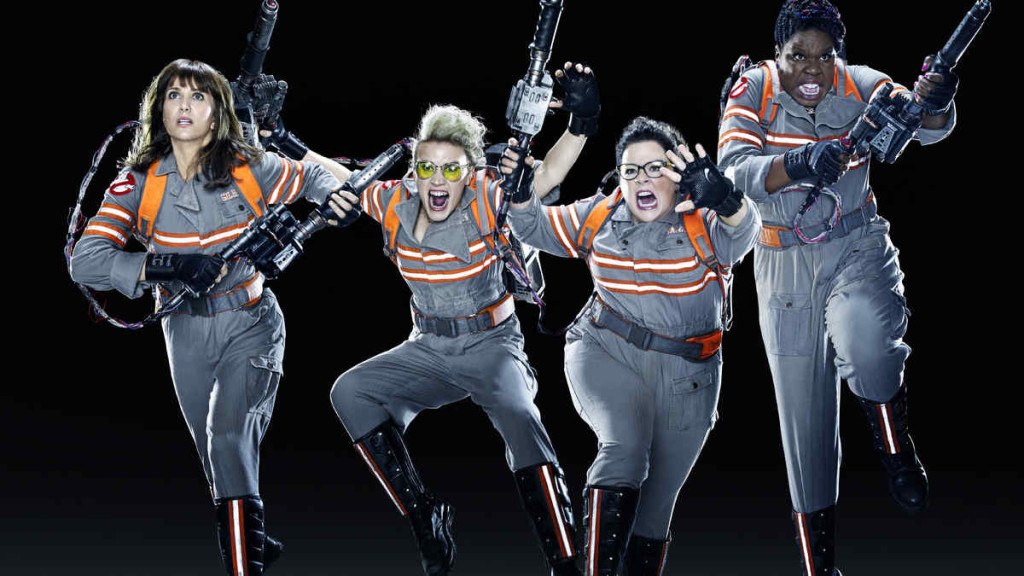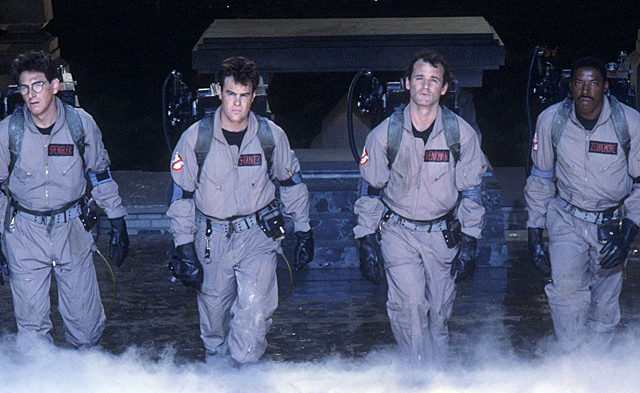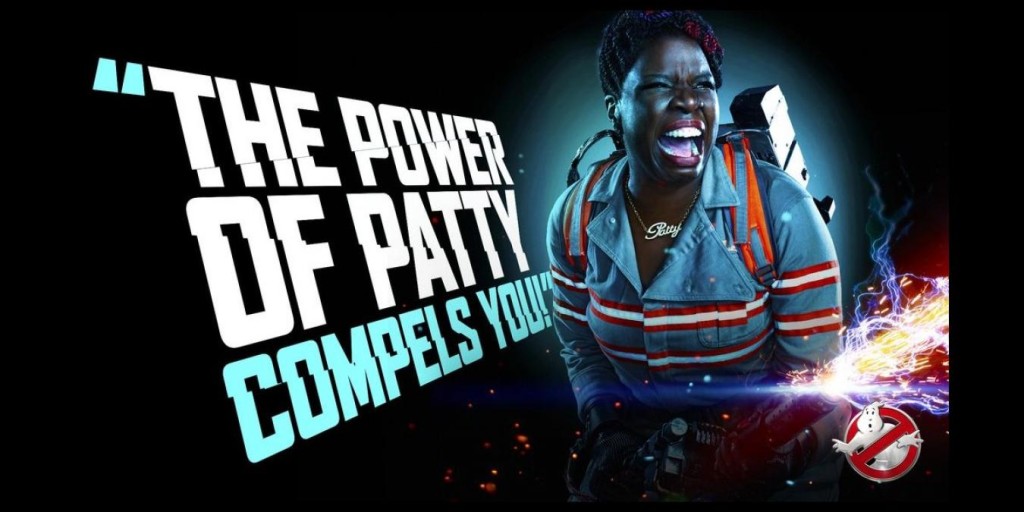Genre: Comedy
Premise: When ghosts take over New York City, a team of female scientists with a strict, “No men allowed” policy, must figure out a way to control the supernatural outbreak.
About: One of the most storied project developments in cinema history. 30 years of trying to get a third Ghostbusters made. There have been numerous scripts written by an endless line of writers. Bill Murray refused to read any of the scripts for some reason, preventing the project from ever moving forward. Eventually, a “young corps of Ghostbusters” idea was thrown onto the table. But Sony strangely split that plan into two separate scripts taking two separate angles on the idea. That led to even more confusion and frustration and never went anywhere. A few years ago, Paul Feig (Bridesmaids, The Heat) felt that he could bring something new to the franchise with an all-female cast. Desperation reared its ugly head, the studio greenlighted the film before Feig could change his mind, and for the last two years, the internet attacked the odd angled remake, culminating in a Youtube war where the Ghostbusters trailer became the most disliked trailer of all time. The film finally came out this weekend. Time to figure out how it was received!
Writers: Katie Dippold & Paul Feig (based on the film, “Ghostbusters” written by Dan Akroyd and Harold Ramis and directed by Ivan Reitman).
Details: 116 minutes long
Oh man. Ghostbusters.
After all these attempts. After all these scripts. After all the Dan Akroyd interviews promising another Ghostbusters.
And we’re finally here, 30 years later, a finished product in hand.
I’m sure you’re asking the same question as I.
Was it worth the wait???
The answer can be found in Ghostbusters’ opening weekend take: $45 million.
I think that says it all, right? 45 million dollars. It’s not exactly a bust. It’s not exactly a hit. It just “is.” And that’s the best way to describe the new Ghostbusters. It just “is.”
So what happened? How did this film end up in box office purgatory, critical consensus purgatory, audience consensus purgatory?
I’ll tell you how. Because nobody involved wanted to make it.
Including the most important person on the project – THE DIRECTOR! That’s right. Paul Feig turned this down. He only later agreed to do it so he could get back together with his girl posse. And thus this passionless project was born.
Contrast this with the original Ghostbusters. Have you read any of the interviews from that time? Dan Akroyd was OBSESSED with this idea. He was PASSIONATE about this idea. This was his baby. And that’s the biggest difference between the original and this alternate universe version.
Passion.
I mean when you see Akroyd excitedly sliding down that pole in the original, that’s genuine excitement! His eyes tell us everything: “Can you believe we’re making this!?”
There isn’t a single person on this cast or behind the camera that would slide down a pole for this movie. And that’s why we have a lame Ghostbusters. When you walk out of the film thinking, “Something was missing and I can’t put my finger on what.” THAT’S the “what.”
And that’s the real reason behind the blowback. The Ghostbusters people want to paint it as misogyny because it’s the narrative that favors them. But the reality is, this movie got greenlit to take advantage of a hot trend – comedies centered around females. NOT because someone who loved and cared about Ghostbusters wanted to share it with the world.
Now you may reply with, “Wait, Carson. What about Star Wars. Didn’t they do the same thing with that movie? Wasn’t that all about the money?” One big difference. They hired people WHO CARED about Star Wars. Who would’ve made it for free. Who would’ve given up their first born to direct a Star Wars movie. That’s not the case with this Ghostbusters reboot and everybody involved knows it.
Find me one interview in the past 20 years of Kristin Wiig or Melissa McCarthy or Paul Feig citing Ghostbusters as an inspiration. You won’t find it. I’d be willing to bet Wiig only did this franchise as a favor to Feig for jump-starting her career.
By this point you’re probably desperate to know what this movie is about. And by “desperate” I mean you couldn’t care less. Too bad. I’m going to tell you anyway. A group of scientists with an interest in the paranormal hear that real ghosts are invading the city and start a business (Ghostbusters) to capture those ghosts.
The difference between this and the original is that instead of our three Ghostbusters being buddies, core members Erin (Kristen Wiig) and Abby (Melissa McCarthy) USED to be friends, and don’t get along anymore. They’ve also added a street-wise expert on New York City (Leslie Jones) and the lamest villain this side of a Saturday morning cartoon.
Despite the overall lameness of the movie, as far as screenwriting goes, there are some things worth talking about, starting with that broken friendship.
When I went back to watch the original Ghostbusters, a movie that came out before there was a single screenwriting book on the market, I noticed there weren’t any issues with the friends. They were one big happy unit.
Whereas Ghostbusters 2016 was made during a time when there are 100+ screenwriting books on the market (mine included) drilling into your head that you have to explore characters, explore characters, EXPLORE CHARACTERS. Hence, in this new modern Ghostbusters, we have a broken relationship at the center of the film.
So the question becomes, has this newfound obsession with conflict-heavy relationships made storytelling better or worse? Are we overthinking our screenplays when it’s clear, from the original Ghostbusters’ success, that eschewing character development, at least in some cases, results in a better film?
The answer to this is complicated. Good character development always trumps good non-character development. But if your character development is uninspired, hackneyed, or lazy, than the script would’ve been better off without it. And that’s how I feel here. The Erin and Abby riff wasn’t bad. But there’s a definite “Screenwriting 101” vibe to it, as if the script needed to be approved by a USC professor before Sony could read it.
A bigger issue here is the lack of economic storytelling. Feig seems to come from the Judd Apatow school of directing, which is to say, the more, the better. But movies, especially comedies, always work best when the story is streamlined and all of the fat is stripped away.
I can point to a couple of examples for you. In the original Ghostbusters, the secretary is just there answering phones one day. She doesn’t get some grand entrance or interview. That would’ve slowed the story down. This allows us to move through that section of the story quickly.
In the new Ghostbusters, they stop the plot cold to add an interview scene for Chris Hemsworth’s character. Now is this scene a crime against screenwriting? No. I’m not saying never write an interview scene. In fact, I bet they even shot one for the original Ghostbusters secretary.
But here’s the difference. If they did shoot that scene in the original, they cut it. Feig, on the other hand, more concerned with a couple extra jokes, kept his unnecessary scene intact. And it was choices like this – keeping unnecessary scenes around instead of deleting them – that slowed this movie to a crawl.
A more blatant example of this occurs near the middle of the film. We get this weird back-alley “test out our new Ghostbusters weapons” scene. The scene has the requisite number of explosions, prat falls, and variations of “Oh snap.” And the scene is, at best, okay.
BUT IT DOESN’T PUSH THE STORY FORWARD!
Here we are, in the middle of the script. The story has already slowed to a crawl. The audience is getting bored. And you place a scene in the movie that has NOTHING TO DO with the story. It’s just characters goofing around. That’s a screenwriting sin right there. And for neither Feig or Dippold to realize this and cut the scene out, proves why this film was doomed.
It goes back to passion. When there’s no passion, you don’t care about getting it perfect. You care about goofing around and having fun on set. A director passionate about this material would’ve known that that scene wasn’t necessary.
And then there are things beyond the script that irk me. Like Paul Feig talking about Chris Hemsworth. When asked by Deadline what he thought of Hemsworth, this is what he said: “Without hyperbole, I think he’s the next Cary Grant, if he continues on the comedy route.” I mean, seriously? Give me a fucking break. At BEST Chris Hemsworth was an above-average surprise. Cary fucking Grant? Right. And Melissa McCarthy is the next Audrey Hepburn.
This is desperate over-selling, which tells you just how little confidence Feig has in his product. And I think if you strapped Feig to a lie detector and asked him if he could do it all over again, would he have made this movie, he’d tell you unequivocally, no. Which is ironic. Since it doesn’t feel like a new Ghostbusters has been made anyway.
Who you gonna call? Amy Pascal. To tell her this franchise is dead.
[ ] What the hell did I just read?
[x] wasn’t for me
[ ] worth the read
[ ] impressive
[ ] genius
What I learned: Reverse dynamics. This works well in comedy. What you do is you write a scene where one character is very dominant and the other submissive. Then, later in the script, you find a way to reverse their roles and play the scene over again. So in the original Ghostbusters, Venkman (Bill Murray) comes over to Dana’s (Sigourney Weaver) place to look for ghosts, but he’s really trying to make a move on her. She’s disgusted by him and eventually kicks him out. Later on, Venkman comes over again, but this time Dana is possessed by Gozer, who desperately wants to have sex with a human. So now it’s Dana who’s putting the moves on Venkman and Venkman’s resisting. We never get anything close to this clever in the 2016 Ghostbusters, of course.




